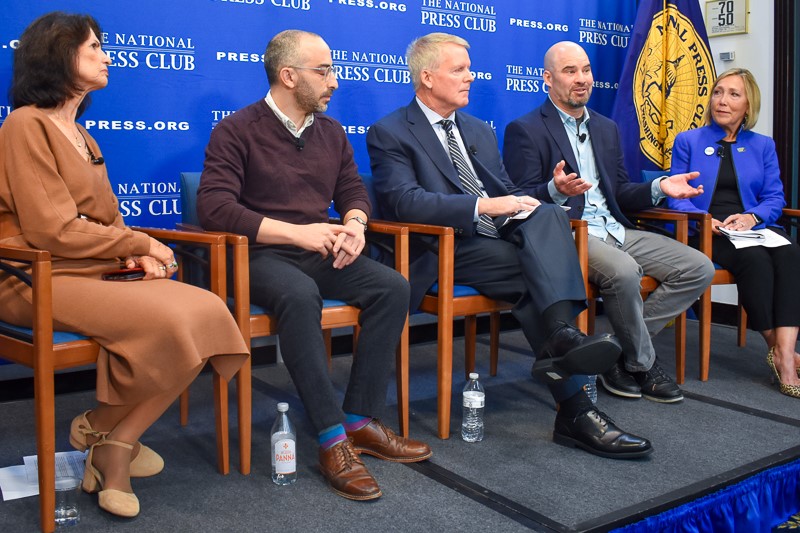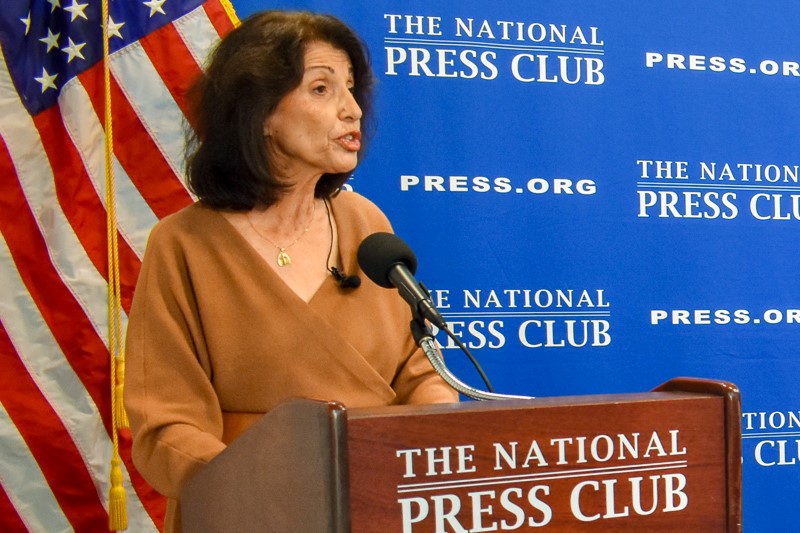Journalism Safety Task Force: Make protecting reporters a priority
News organizations must make funding available to ensure reporters’ security, regardless of their budgetary constraints, journalists and press freedom advocates said Oct. 16 at the National Press Club.
Publications and broadcasters "want to send people out to cover these controversial stories because that's where the news is," said Diane Foley, founder and president of the James W. Foley Legacy Foundation, a non-profit organization dedicated to press freedom. “Journalists' safety has to be a priority. They have got to realize how valuable reporters are...without them, they aren't going to get any story."
Foley, officials from the New York Times and Voice of America and journalism educators from Marquette and Northwestern launched the Journalist Safety Task Force at a Club Newsmaker event.

The dangers journalists face are on the rise domestically and internationally, with many journalists already being targeted in the Israeli-Hamas conflict, according to reporting from the Associated Press. On Monday, the Committee to Protect Journalists said at least 15 journalists were among the more than 4,000 dead on both sides since the war began on Oct. 7.
Jason Reich, vice president of safety and security at The New York Times, said editors can no longer dismiss journalists asking questions regarding their protection.
"What we've been trying to do is make sure that these young reporters, these student reporters, freelancers recognize that in a modern newsroom, an editor sees security consciousness as an asset and not a liability," Reich said.
As safety concerns associated with reporting in conflict zones and the United States grow, the Newsmaker participants said newsroom managers are increasingly receptive to safety discussions.
Tom Durkin, director of journalist education and safety training at the Foley Foundation and Marquette Center for Peacemaking, said he teaches students how to "do a risk assessment and interview hostile sources" because they need to be safe to be effective journalists.
Risk assessments also are top of mind for Eric Phillips, program manager for the Office of Language Programming at the Voice of America. The organization currently has journalists on assignment in Israel.
"Do that risk assessment,” Phillips said. “Every public building in Israel is required by law to have a bomb shelter. Find the closest one to you. Know where it is at all times," he said he tells journalists.

Durkin compared journalists to his sister Katie, who is a paramedic field chief with the Chicago Fire Department.
"Her job is to save lives, but she needs to know how to do it safely," Durkin said. "Journalists are no different than first responders. They run toward scenes. They run toward violence. They run toward places where other people are leaving. And they are armed with a pen and camera."
He added: "I feel a responsibility to make sure journalists, at the youngest age, are learning how to be safe and how to build habits."
Journalists also must keep track of the details, Phillips said. For instance, a VOA journalist once forgot a badge and was placed in jail for 10 days in South Sudan when the government couldn't verify the reporter’s identity.
Digital safety is as important as physical safety, said Ellen Shearer, emerita professor at the Medill School of Journalism at Northwestern. Reporters often can be "attacked without leaving [their] desk," she said.
Reich agreed that hateful messages from home can silence journalists.
